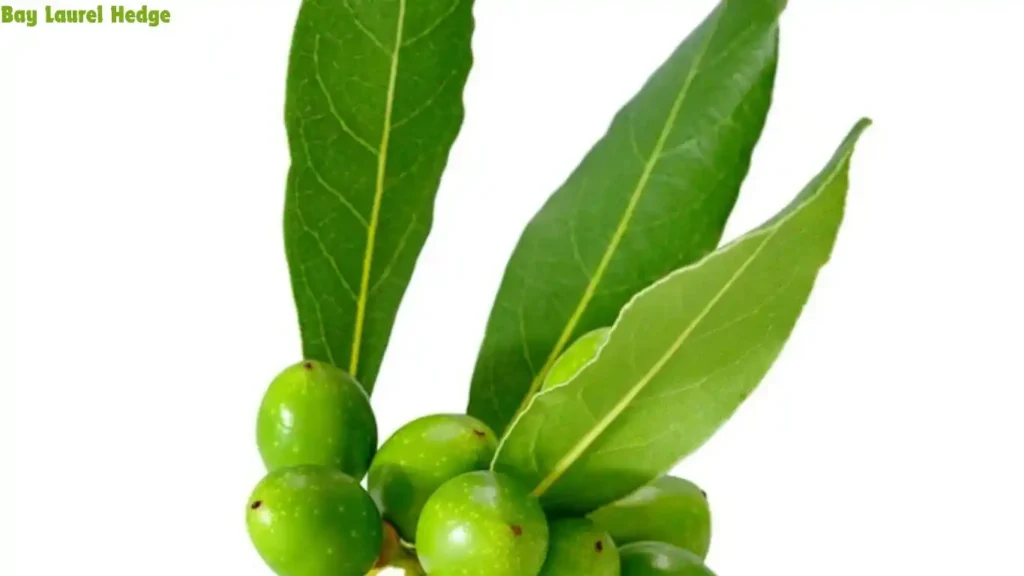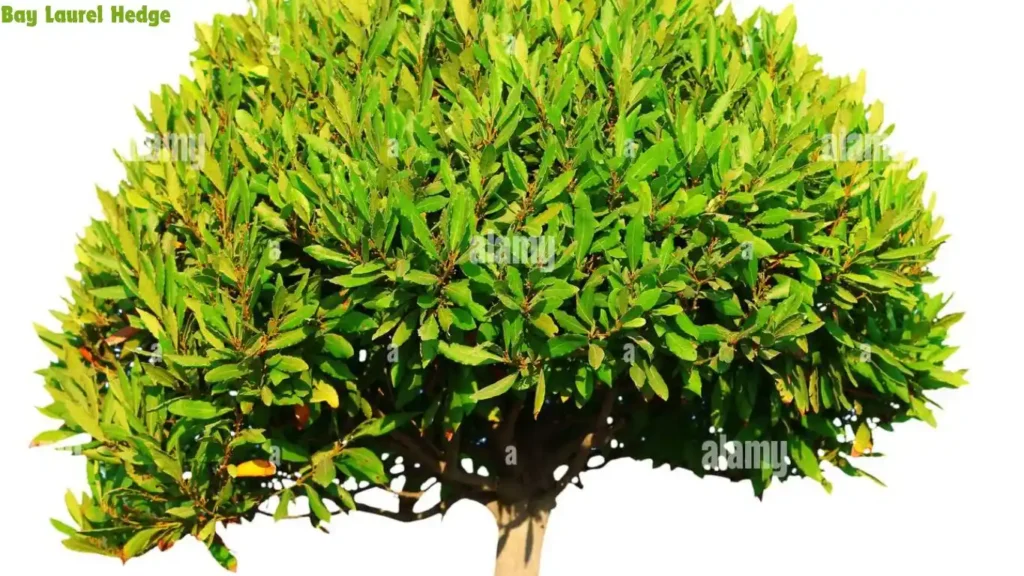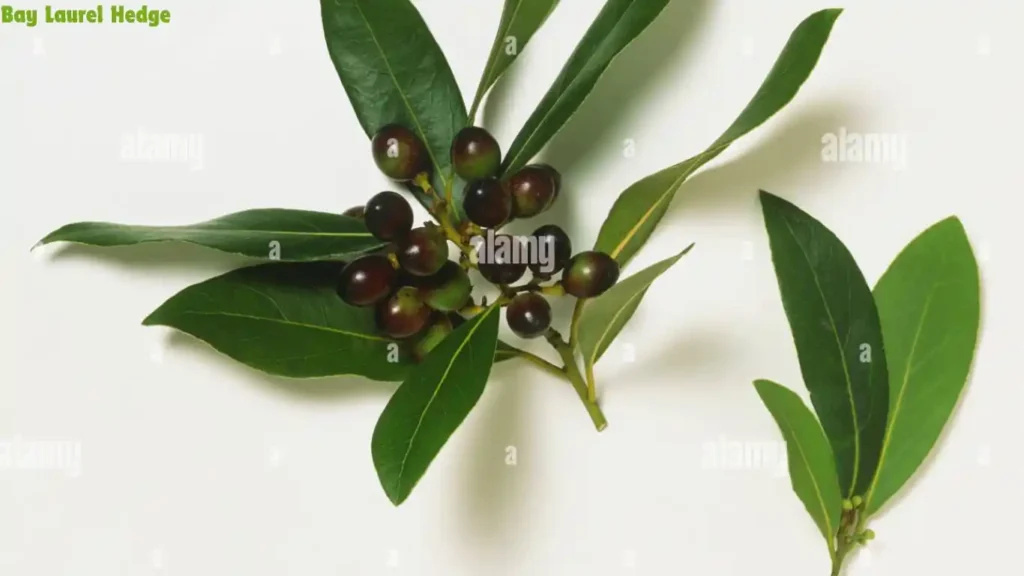Discover the Secret to a Lush Bay Laurel Hedge
A straight shrub bar made from the sweet-smelling Laurus nobilis plant is a flexible addition to any garden or scene.
Known for its polished, dim green leaves and lovely smell, the Bay Laurel Hedge inlet shrub support fills both modern and commonsense needs.
This evergreen bush is local to the Mediterranean district and has been developed for quite a long time.
Choosing the Right Location
While planning to establish a cove shrub fence, choosing the Bay Laurel Hedge right area is critical for its development and well-being. This is the thing you want to consider:
Daylight Prerequisites: Cove shrub fences flourish in full daylight. Pick a spot in your nursery with 6 to 8 hours of direct daylight daily. This ensures substantial expansion and improves the leaves’ sweet-smelling characteristics.

Soil Conditions: Cove trees prefer very drained soil with a pH level below 6.0 and 7.5. Sandy topsoil or loamy soils are great, as they provide essential waste while holding sufficient dampness—a critical factor in maintaining sound cove shrub walls.
Environment Considerations: While the cove tree is universal to different environments, it flourishes in gentle temperatures. It can endure regular ice yet may experience delayed freezing conditions.
Considering you live in a colder environment, consider setting the narrow shrub Bay Laurel Hedge in a secure region or holders that can be brought inside during winter.
Guarantee from Winds: Sound tree supports benefit from protection against solid breezes, which can harm their sharp foliage.
Selecting a block close to a characteristic windbreak or making a block with different Bay Laurel Hedge plants or designs can help protect the fence and advance solid development.
Arranging Tips: Inspect your nursery daily to identify the brightest spots before planting. Alter heavy earth soils with natural matter like manure to ensure the dirt drains well.
These preliminary advances establish the groundwork for a flourishing cove tree support that boosts your scene with its excellence and smell.
Preparing the Soil
Setting up the dirt before selecting your channel shrub fence is fundamental to guarantee ideal development and well-being. Follow these moves toward setting optimal conditions for your plants:
Soil Type and pH: The inlet shrub Bay Laurel Hedge favors very depleted, marginally acidic soil to neutral (pH 6.0-7.5). Test your dirt to determine its pH level and change it if necessary.
Sandy topsoil or earthy soils are great for the Bay Laurel Hedge tree, delivering significant waste while maintaining fundamental moisture.
Adding Natural Matter: Improve the dirt’s ripeness and structure by reducing natural matter like fertilizer or decaying waste. Spread a layer of droppings over the establishing region and blend it into the dirt to a deep of around 12 inches.
This supplements the dirt, further develops water maintenance, and encourages beneficial microbial movement.
Changing Soil Surface: If your dirt is weighty or bent to compaction, loosen it by searching deeply and separating bunches. This will improve root entrance and waste, which are vital for the well-being of narrow tree plants.
Treating: Before planting, consider using proper compost to give fundamental accessories to starting development. Pick a manure with a proper NPK proportion (nitrogen, phosphorus, potassium) appropriate for bushes.
Adhere to load directions for application rates to avoid over-preparation, which can hurt the plants Bay Laurel Hedge.
Timing: Set up the dirt before planting to permit modifications to coordinate completely. This guarantees that the dirt is good to go and prepared to help solid development once the cove tree Bay Laurel Hedge plants are laid out.
Planting Bay Laurel Hedge
Legitimate selecting strategies are vital for laying out a solid, narrow shrub support. Keep these rules to ensure a positive outcome:

Best Setting Time: The ideal time for establishing narrow shrubs is late winter or late summer. These seasons offer gentle temperatures and good dampness, which advance fast root basis. Avoid planting during humid late spring months or freezing winter conditions.
Dispersing: While establishing a bay tree Laurel Hedge for a fence, space unique plants roughly 2 to 3 feet divided. This separating considers fair air flow and obliges the bush’s professional size, ensuring thick and uniform support over the long run.
Digging the Opening: Dig establishing openings that are two times as wide and similarly as deep as the root wad of your inlet tree Laurel Hedge plants.
Loosen the dirt at the base and sides of the opening to support root development past the establishing region.
Establishing Profundity: Bay Laurel Hedge Spot each sound tree plant in the focal point of its pre-arranged opening, providing the highest point of the root ball is level with the encompassing soil surface. Avoid selecting overly profound, which can choke the roots and control development.
Refilling: Fill the opening with the fixed soil combination, delicately firming it around the roots to remove air pockets. Water completely following planting to settle the dirt and dampen the roots.
Mulching: Apply a 2 to 3-inch layer of natural mulch, such as bark chips or fertilizer, around the foundation of each plant Laurel Hedge. Mulch holds soil dampness, controls soil temperature, and buries weeds, offering better development for your narrow tree fence.
Watering and Drainage
Legitimate watering and waste are basic for keeping a sound narrow shrub fence. This is the way to ensure your fence gets the perfect balance of water and keeps up with significant seepage:
Watering Reproduction: Newly established inlet shrub supports need normal watering to establish roots. Water profoundly more than once per week, upon
atmospheric conditions. During hot, dry periods, increase watering recurrence to forestall pressure and advance action.
Watering Method: Water at the basis of the plants, trying not to wet the foliage unnecessarily.
Utilize a soaker hose or dribble water system framework to convey water slowly and straightforwardly to the root zone. This technique rations water and reduces the gamble of infectious diseases.
Observing Soil Dampness: Check the dirt dampness routinely by implanting your finger into the dirt close to the plants.
Water when the best 1 to 2 slimes of soil feel dry. Change the watering frequency given climate conditions and rare changes.
Significance of Good Waste: Narrows shrub Laurel Hedge borders favor very much drained soil to forestall root pollution and other water-related issues.
Guarantee the establishing area has reasonable seepage by altering weighty dirt soils with natural matter and trying not to low-lie regions sloped to water collection.
Mulching
Mulching is a gainful practice for narrows tree Laurel Hedge supports, giving different benefits to their growth and wellbeing:

Advantages of Mulching: Mulch holds soil dampness by diminishing disappearing from the dirt surface, mainly during hot and dry periods. This guarantees that bay tree supports get sufficient dampness for sound development without overwatering.
Sorts of Mulch
Natural Mulch: Materials like crushed bark, manure, and leaf shape are excellent choices for narrow shrub fences. Natural mulches decay step by step, advancing the dirt with accessories and working on its structure after some time.
Inorganic Mulch: Choices like rock or stones can also be utilized around straight shrub supports. These materials give robust weed concealment and improve seepage while keeping a clean appearance in the nursery.
Using Mulch: Spread a 2—to 3-inch layer of mulch equally around the basis of each narrow tree plant, pulling out to the trickle line. Leave a little hole between the mulch and the plant’s stem to forestall dampness-related issues, such as stem decay.
Mulching Tips: Restore mulch every year to keep up with its viability and formation.
Try not to heap mulch against the stems of straight tree Laurel Hedge plants, as this can advance parasitic conditions and stem decay.
Mulching reduces soil dampness, controls soil temperature, decreases weed growth, and improves soil well-being around inlet shrub fences.
By picking the right mulch and applying it accurately, you can improve the development and versatility of your straight shrub support, adding to its long-term well-being and looks in your scene.
Pruning and Maintenance
Normal pruning and upkeep are essential for keeping cove tree fences solid, energetic, and stylishly lovely. This is the way to really focus on your support successfully:
Pruning Directions
Timing: Prune narrows shrub fences in pre-summer or late spring after the blooming period. Try not to prune in pre-fall or fall, as this can liven new development that may not firm off before winter.
Apparatuses: Utilize sharp, clean pruning Laurel Hedge shears or clippers to make smooth cuts without tearing the plant tissue. Sanitize instruments between cuts, particularly if pruning infected branches, to forestall the spread of microbes.
Forming: Keep a uniform shape by pruning daintily all through the developing season. Begin by working delicately to certify thick development from the base vertical. Shape the fence always to achieve the ideal level and width.
Maintenance Program
Eliminate Dead or Infected Branches: Always review your narrow tree Laurel Hedge fence for dead, harmed, or ailing branches. Prune them back to sound development to develop attitude dissemination further and forestall the spread of infection.
Distributing: Intermittently dainty outpaced branches allow light and air to enter the inside of the support. This lessens the risk of parasitic diseases and advancements even development.
Level Control: Trim the highest points of inlet Laurel Hedge shrub fences marginally smaller than the base to ensure daylight comes at lower branches. This training supports full, thick development from start to finish.
Post-Pruning Care: After pruning, tidy up and discard embellishments to forestall bother charges and keep a clean formation.
Water your narrow shrub fence completely in the wake of pruning to diminish pressure and advance recovery.
Pest and Disease Management
Sound tree fences are for the most part strong yet can be helpless to specific problems and illnesses. This is the way to determine, forestall, and oversee normal issues:
Normal Pains: Scale Bugs: Search for little, stationary knocks on the stems and leaves of narrow tree Laurel Hedge plants. Scale bugs provide on plant sap, straining the fence over the long haul.
Control attacks by pruning greatly swarmed branches and applying plant oil or insecticidal cleaner.
Insect Bugs: These small vermin continually appear as fine webbing on the underparts of leaves.
They suck plant juices, causing yellowing and texturing of foliage. Shower-impacted plants with areas of strength for water to oust bug parasites or utilize insecticidal cleanser as conformed.
Caterpillars: Some caterpillar species feed on cove tree leaves, causing defoliation and stress in the plants. Handpick caterpillars when possible, or use Bacillus thuringiensis (Bt) insect spray for bigger pervasions.
Infection The directors: Fine Mold: An infectious sickness that appears as white fine fixes on leaves. Further, develop an air course around the support by pruning to permit better wind current and refrain from above watering. Apply fungicides marked for fine buildup control if essential.
Root Decay: Overwatering or depressing waste can prompt root decay, causing the leaves to turn yellowing and the whole plant to wilt. Guarantee proper waste and avoid saturated cases to forestall this difficult issue.
Fertilizing Requirements
Fair practice is basic for cove shrub fences’ solid development and progress. Observe these rules to ensure your fence gets the supplements it needs:
Supplement Needs: Straight tree Laurel Hedge fences benefit from fair manure that gives fundamental supplements like nitrogen (N), phosphorus (P), and potassium (K).
Pick a compost with a reasonable NPK proportion, like 10-10-10 or 15-15-15, appropriate for bushes.
Timing: Apply compost to sound tree supports in late winter before new development starts. This helps support active development all through the developing season.
Try not to treat in pre-fall or fall, as this can liven late-season development helpless against ice harm.
Application Strategy: Spread compost equitably around the foundation of each support, keeping it a few inches away from the stem. Water is used completely after applying manure to assist supplements in coming at the root zone.
Natural versus Simulated Manures: Both natural and engineered composts can be utilized for narrow shrub fences.
Natural choices, like fertilizer or all-around decomposed waste, further develop soil structure and advance useful microbial action. Engineered manures give prompt supplement accessibility yet may require more continuous applications.
Preparing Tips: Adhere to bundle guidelines for your particular manure, as application rates might shift. Screen plant Laurel Hedge development and change treatment in light of plant reaction and soil supplement levels.
Refrain from over-treating; excessive supplements can down roots and harm the support.
By meeting the practice needs of your narrow tree Laurel Hedge support, you advance sound foliage, powerful action, and, by and large, imperativeness. Then, we’ll discuss methods for preparing and developing cove tree supports.
Conclusion
Incorporating a bay laurel hedge into your landscape offers aesthetic appeal, culinary benefits, and practical functionality. Whether for privacy or culinary delights, bay laurel Hedge is a versatile addition to any garden.
FQAS
How fast do bay laurels grow?
California bay laurel grows best in full sun to partial shadow. When planted in full sun and watered regularly, it can grow as much as 4 feet yearly. It will grow more gradually in partial shade, but it is still a lovely plant.
Are bay laurel roots invasive?
If given the possibility, bay laurel will have an intrusive root system.
Do bay laurels like sun or shade?
Bay laurel trees enjoy full sun if planted in cold temperatures and partial shade in more seductive zones. Plant your tree in a location that gets full sun and partial shade. 3. Mulch your bay tree.
Do laurels stay green all year?
This may be why they are usually called “Cherry laurels” –cherries and plums are also Prunus species. Laurel plants are broad-leafed evergreens, meaning they have wide, chewy leaves that remain on the plant all year long.
How long does a laurel hedge last?
How long does Laurel live? All types of laurels are long-lived and will endure as a border for hundreds of years.
Are Bay Laurel trees messy?
Are bay laurel trees confused? Berries produced by bay laurel can become muddled. Nonetheless, both a male and female plant are needed for flowers and berries, and, outside of USDA growing zones 8 to 10, most trees are grown just in pots.
When should you not cut laurels?
Laurel hedging can be cut back quite far, as long as you bypass doing so in the winter months when ice can damage the plant if there are just cut boundaries.

2 Comments